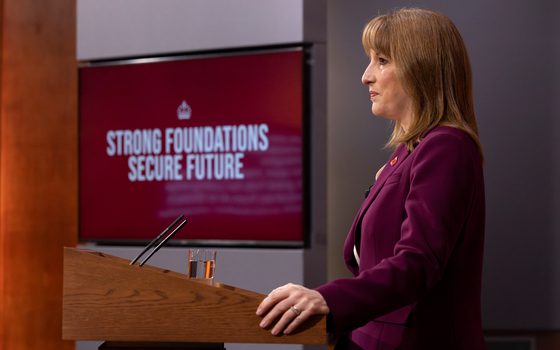Theresa May’s promise to end austerity is empty
NEF projections show squeeze set to continue
12 October 2018
Theresa May announced earlier this month that the era of austerity is over. She pledged to increase spending as well as reduce debt.
However, NEF analysis shows that without a drastic change of direction, many key departments and institutions will receive effective cuts over the next five years. Loosening the purse strings slightly does not mean that austerity is over, given our growing population and increasing demand on public services.
Our analysis shows:
- Prisons in England and Wales have faced a 21% cut in day to day resource spending from 2009/10 to 2018/19, and are expected to face a further 6.3% cut between now and 2023/24.
- Schools in England have faced a 7.9% cut in spending per pupil from 2009/10 to 2018/2019, and are expected to face a further 4% cut per pupil by 2023/24
Austerity has also hit those who can least afford it the hardest. The same groups who have been hit hardest by tax and benefit changes are those most affected by cuts to public services. The poorest families have experienced an average drop in living standards of around 17% between 2010 and 2020. Black and Asian households in the lowest fifth of incomes experienced the biggest average drop in living standards of all groups: 19.2% and 20.1% respectively.
The government is failing even on its own measures of progress. Analysis shows that austerity has suppressed output by 15% between 2010/11 and 2017/18.
And, in focusing so much on reducing government debt, we are left with a ticking time bomb of household debt.
It remains to be seen whether austerity truly will be ‘over’ in the upcoming government Budget.
The Chancellor recently acknowledged that we have faced years of slow wage growth, job insecurity and unaffordable housing, but failed to mention that this is because economic policy of the last decade has failed us. Productivity has remained weak whilst unearned wealth has soared. Austerity has suppressed growth and further widened inequality.
This acknowledgement that the economy isn’t working is progress, but until the government starts to discuss and address the role of austerity in this, it will all be empty rhetoric.
Notes
Prison data for historical cuts is drawn from Central Supply Estimates spending for NOMS and subsequently HMPPS. It does not take into account additional requirements on the prisons budget (eg. from 2016 responsibility for education and training provision for those subject to adult detention was transferred from DfE to HMPPS), but simply compares overall spend.
Schools data for historical cuts follows analysis by Luke Sibieta at Institute for Fiscal Studies of spend per pupil cuts.
In both cases, future cuts are calculated using NEF’s departmental spending spending model. See our report for further details.
Topics Macroeconomics






